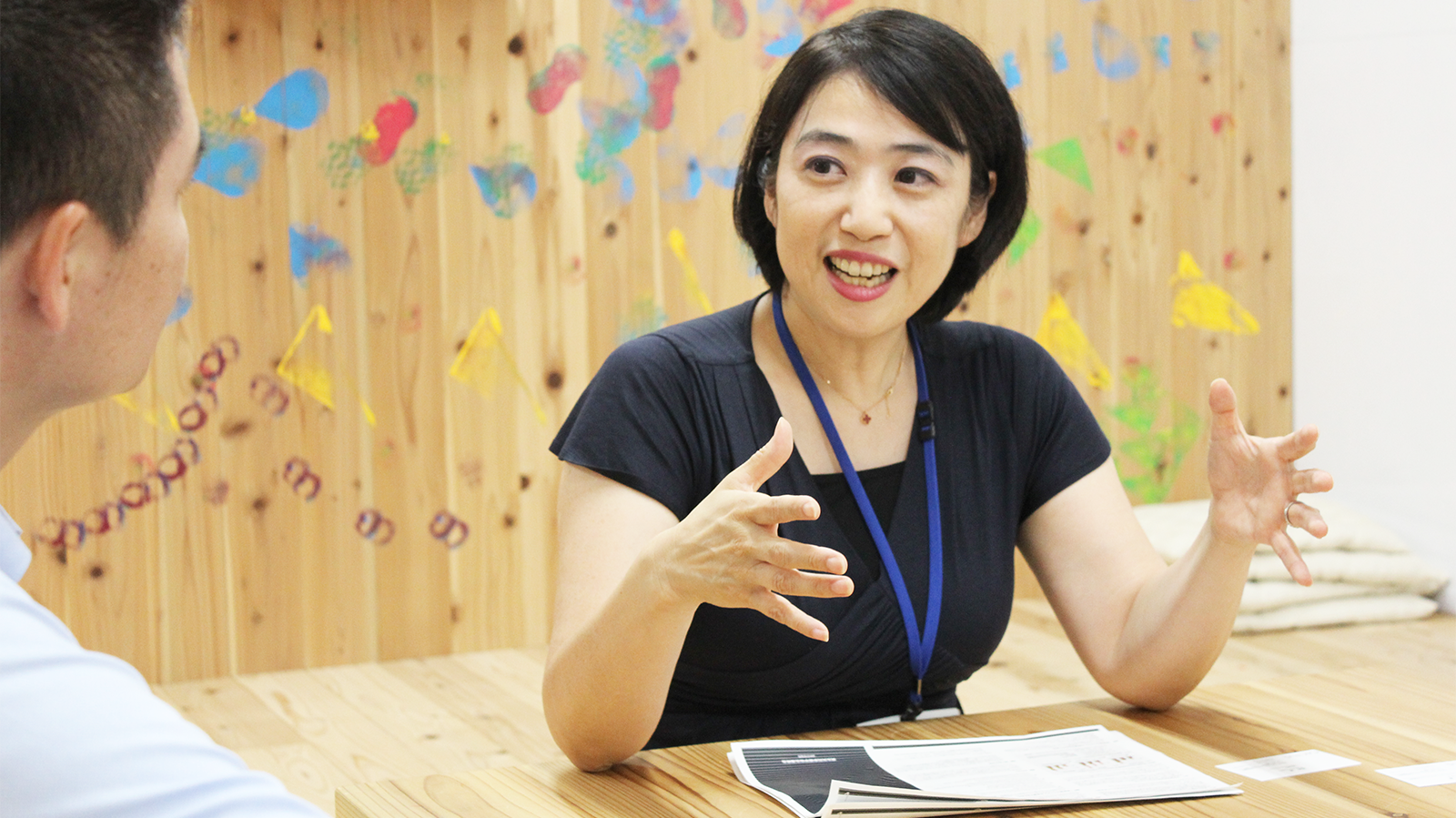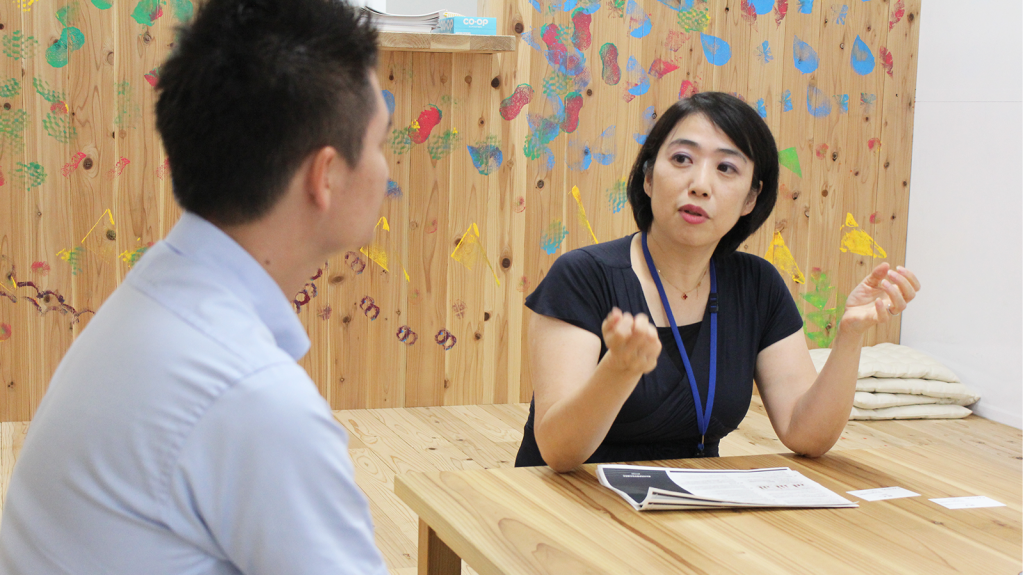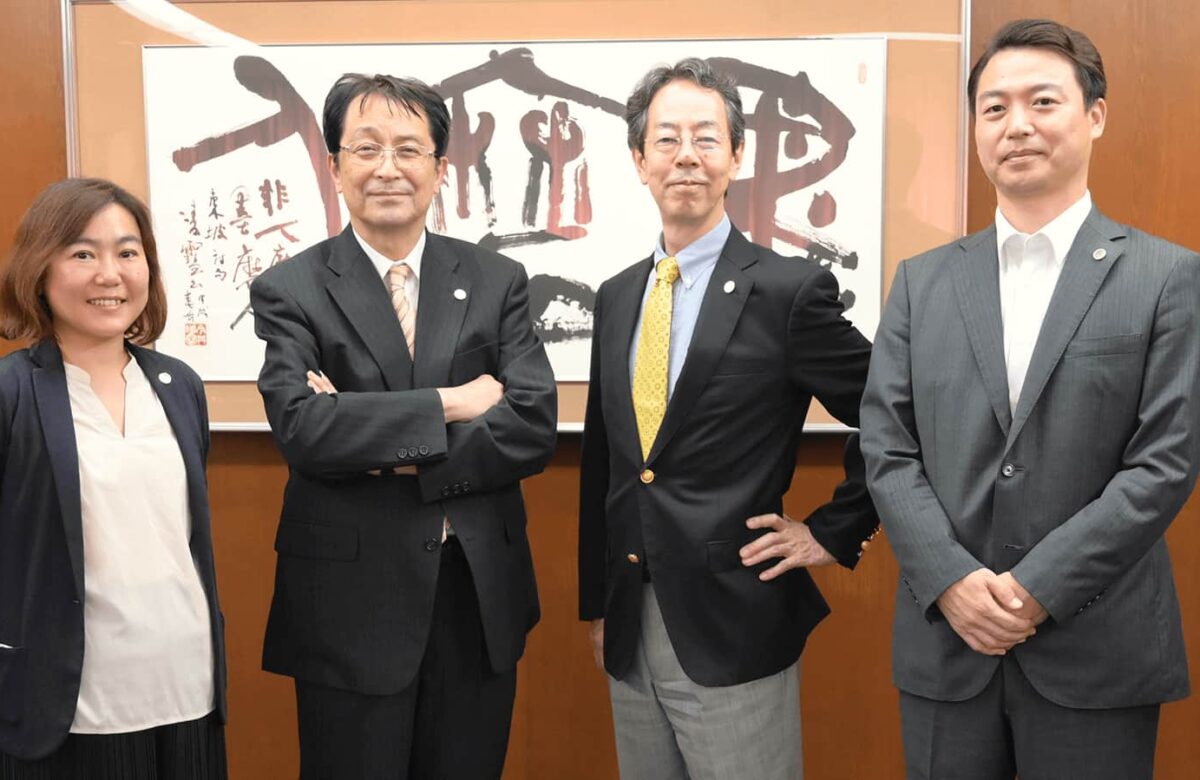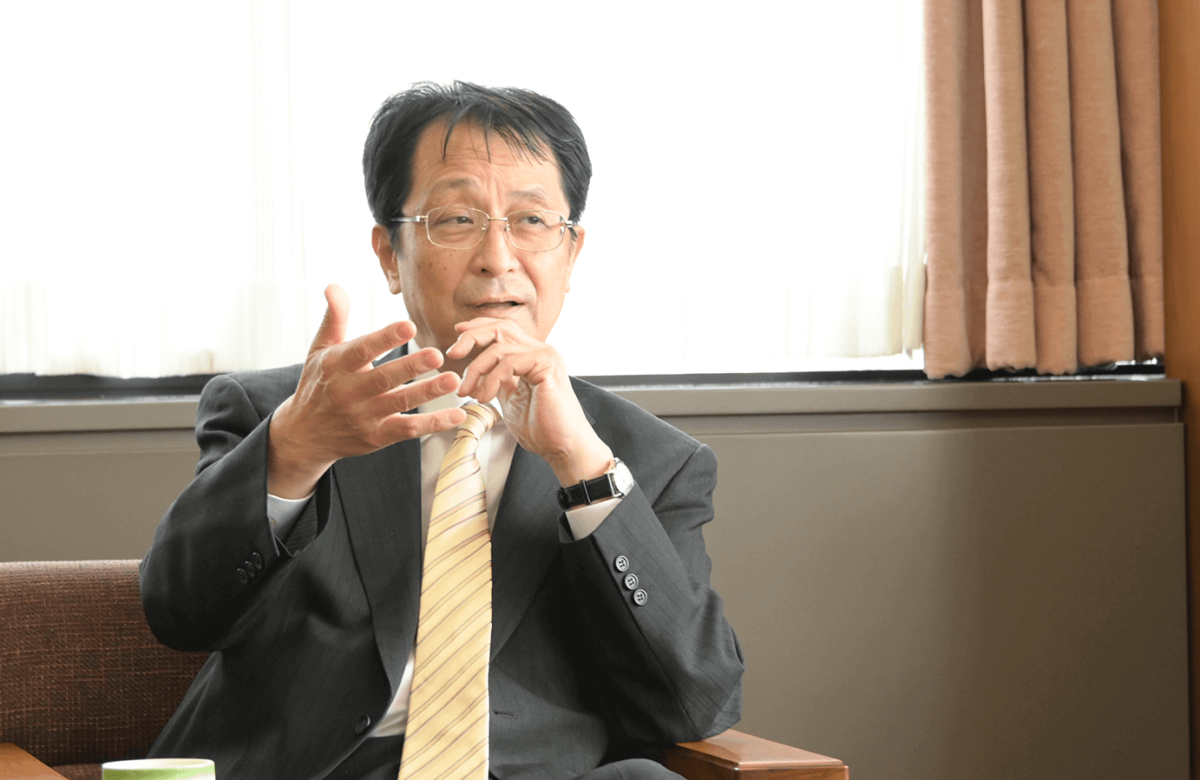Helping Women Get to the Top
Narie Sasaki discusses the support system for parenting academics at Nagoya University.
- UniversityArticleInterview
- September 1, 2018

Narie Sasaki plays a key role in organizing holistic support for parenting academics at Nagoya University. Along with pursuing her biology research, Narie facilitates efforts to increase the number of women academics. She acts as an advisor who has first-hand experience of the issues and draws on her experiences as a teacher at Ochanomizu University and a member of Nagoya University’s Center for Gender Equality.
Launching on-campus childcare facilities
I used to work at Ochanomizu University. My boss once said to me, “Narie, don’t you want to have children soon? It makes no sense that we don’t have any childcare facilities on the campus, so let’s start one!” I’d given up on having a child, but I closely witnessed how my senior colleagues were driving forward reforms to the parenting support system. I thought that, with this support, I might be able to have kids after all. I eventually had a baby a year after the nursery started and was able to make use of the nursery.
I came to Nagoya when my child was three. A friend told me that the real hardships come once the child starts elementary school and that I would need to use an after-school care facility. At the time, Nagoya University had a nursery owing to Professor Tsukamura’s efforts, but no after-school facility had been established.
So I thought, “Why not start one?” I had my experience at Ochanomizu University to rely upon, so I proposed the idea soon after I started working at the Center of Gender Equality. The first step was to find a suitable site. Fortunately, the university was planning to construct a new on-campus nursery, so I suggested making it a two-story building and including an after-school facility.
Have you heard of the “Elementary grade 1 wall”? You can leave your child in a nursery until late in the evening. However, elementary schools do not look after children during evening hours. So, once the child reaches elementary school, many women find that they can’t continue working. Nagoya University has taken steps to address this problem. With a single phone call, you can arrange for the facility to look after the child up to 9 pm. They can also give children supper and bathe them. They take care of everything my child needs!

Launching a program to recruit female principal investigators
In an effort to increase the number of women in senior positions, Nagoya University launched a program to recruit female principal investigators. The first advertised vacancy under this program was filled by Azusa Kamikouchi, who came with her child.
A thought occurred to me when Azusa got the principal investigator job. To increase the number of women teachers, you need to be able to recognize talent and be willing to search extensively for the right person. We had been lacking in this regard. If you just limit your search to your own personal networks, you minimize your chances of recruiting a talented woman academic. If you are recruiting for assistant professorship, for instance, you might think that anyone could do the job. But if you create a woman-only position, your decision about who to recruit will have profound consequences for the entire department. Therefore, you need to be very judicious and ensure that the person you recruit is the right person for the job.
I realized that if the recruiters are more careful about recruiting the right person, it will lead to more talented women academics across the country. This experience was instrumental in the university realizing the importance of identifying the right human resources. Azusa took up her post at the age of 36, and she featured in Aera’s special feature on the “Top-100 people who will rebuild Japan.” She was also featured in
a journal of the Japan Science and Technology Agency. This approach also makes business sense; the university will subsidize, for a three-year period,
the personnel expenses of departments to recruit several fixed-term women staff. Against the background of staff cutbacks seen today, such an incentive is vital to motivate departments. When Azusa got the job, it helped encourage the mindset that it is advantageous to recruit women. Soon, several more women came to the university.
Nagoya University has the slogan “Helping women get to the top” on its application forms for major research grants. The government has praised the university’s efforts. Moreover, research grant aids are given relatively easily. Consequently, frontline professors who had never expressed a lot of interest in gender equality have begun to realize that this is an issue that concerns them as well. In addition to being a management strategy, it is also a strategy for improving the frontline situation. Nagoya University is unique for recognizing that recruiting more women benefits the university as well as the people at the frontlines by supporting research.

Supporting gender equality and women academics who are parents
In Japan, efforts to support gender equality are in their nascent stages. Nagoya University, despite all its progress, has only managed to increase the proportion of women staff by 1%. Effecting change is no easy task because the issue runs deeper than the university level; it is an issue that concerns society at large.
As I see it, the glass ceiling that women academics face is not so much an issue of gender as an issue of minorities. If you view it from the perspective of gender, the discussion risks being narrowed down to the biological differences between men and women. Such reductionism will dilute the real and crucial issue, which is figuring out how to increase the number of women academics and ensuring that talented women get appointed to influential positions. On the other hand, regardless of the extent to which women voice the injustices of the system, their concerns may get treated as an issue of minorities. Therefore, instead of focusing on reforming the system, we should first focus on recruiting a much larger number of women academics.
An economist once said that when you account for one-third of the whole, you’re on the threshold of not being a minority anymore. Although women would statistically continue to remain a minority, we would have reached a critical number and could start effecting change in the system. Once we reach the start line, the real issues concerning
women’s place in society will gain visibility.
The problems that the Researchers’ Community for Child Care Support endeavors to address are an increasingly important part of this struggle. Women academics who wish to prioritize their career will inevitably face the issue of having to live separately from their partner. People never really anticipate such a situation, do they? So a number of issues will come into focus, and we can address these one by one as they emerge. The Researchers’ Community for Child Care Support is part of the broader effort to accelerate this process.

NARIE SASAKI
Narie Sasaki is Associate Professor, Division of Biological Science, Graduate School of Science, Nagoya University. After working at Ochanomizu University, Narie Sasaki was provided a special appointment at Nagoya University at the same time that her husband took up a post there. Subsequently, she started working at the university’s Center for Gender Equality. She has devoted herself to supporting women academics and established Japan’s first on-campus nursery. Having returned to academic work, she now works as an associate professor at her husband’s lab/office. Alongside her duties, she advises women who are about to take an academic post at Nagoya University, and she acts as an intermediary for the community.
This article is a part of ScienceTalks Magazine issue The Friendly Solutions Proposed by the Researchers’ Community for Child Care Support at Nagoya University.




